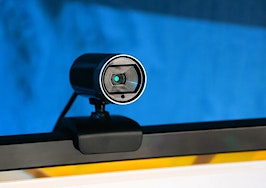 Virtual open houses, digital closings, conversations from behind face masks — what productivity looks like for real estate agents this summer covers new terrain for all of us. All June, Inman surveys the New Productivity: the tools, skills and insights needed to make it work now.
Virtual open houses, digital closings, conversations from behind face masks — what productivity looks like for real estate agents this summer covers new terrain for all of us. All June, Inman surveys the New Productivity: the tools, skills and insights needed to make it work now.
The rapid global spread of COVID-19 has led to a dramatic shift to videoconferencing, and just as quickly, the aptly named Zoom has shot from relative obscurity to become the dominant platform in the field. Not, however, without some growing pains, as concerns over its security began to surface.
As the vice president and regional marketing technology director of WEST, I’ve been using Zoom for several years. WEST, the marketing and technology arm of Williston Financial Group, was an early adopter of the platform as well.
In an effort to alleviate user concerns, Zoom recently released a 5.0 version of its software, which incorporates enhanced encryption and other security features. In addition, the company recently brought in former Facebook chief security officer Alex Stamos as a consultant. Since his arrival, they have developed fixes that directly address these issues, like hiding the meeting ID from the toolbar, in previous updates.
The issue of Zoombombing, which is more a mischievous disruption than a malevolent threat of data theft or system damage, can be largely mitigated by the use of existing account settings.
Zoombombers derail meetings and conference calls by commandeering screens to post messages, pornography or expletives. The problem exploded when schools and companies started running virtual meetings and classes, and a well-intentioned social media post with the meeting ID was available for anyone to see.
However, with its wide range of uses and ongoing responsive evolution, Zoom remains WEST’s platform of choice. While the company is continuing to ramp up security measures, it’s still best not to share financial documents or private information during a call.
What are some best practices?
Zoom allows real estate agents and mortgage brokers to maintain much of their business efforts, from farming to showings and closings. Agents can stream property walk-throughs and answer questions live, all while minimizing traffic through a property.
The four programs and the free “basic,” which allows up to 100 participants on calls of up to 40 minutes, should be enough for normal operating needs. There are three pay levels. The “pro” is $14.99 per month, with a 24-hour time limit for up to 100 participants. The “business” plan is $19.99 per month, and it gives up to 300 participants calls of any duration.
Lastly, the “enterprise” level is for 500 or 1000 participants, and is available through the sales office. Most agents should meet their business objectives with “pro.”
Once you sign up, your account page will open for profile adjustments. Make sure to update the app on your phone. Desktop users should update as soon as upgrades become available. Moreover, always employ two-factor authentication, not only on Zoom, but on every internet platform where it’s available.
For the most secure meetings, I recommend using these meeting setup settings:
- Use a personal ID. Keep this switched off, and when scheduling a meeting, be sure to select “generate meeting ID automatically” to create a random ID number for each meeting.
- Join before host. While it may be useful for smaller groups to converse prior to the host arriving, disable this feature for large groups with unknown participants.
- Use waiting room. Waiting rooms allow you to keep participants out of your meeting until you manually allow them in. This keeps Zoombombers from being able to sneak in after the meeting starts.
- Mute participants on entry. This avoids latecomer disruptions for large presentations, but prevents early arrivals from conversing. So, for small groups of team members, leave participant sound on until the meeting is ready to begin.
- Only authenticated users can sign in. This feature forces the meeting participants to have an account and possibly even the same email domain, like, for example, for people who work at the same company. While it’s great for securing meetings with known participants, for farming events like “first-time homebuyer” classes, this should be turned off.
- Require a password. This also prevents unwanted intruders. However, to not to limit attendees, passwords can be built into the invitation link, providing some protection.
- Screen sharing. For a large group attending a webinar or sales presentation, click the “host only” button. This keeps the screen controlled by the presenter and blocks Zoombombers.
- Security button on the home screen’s lower navigation bar. It has several options, including “Enable Waiting Room” and “Lock Meeting,” which is not available on the main settings. Only use it once all desired audience members are present.
- Chat. Turn off “private chat.” By making all chats public, a host will immediately identify a Zoombomber who joins to harass individuals.
Online videoconferencing is a lifesaver during the pandemic, but many of its features, once learned in the coronavirus crucible, are likely to become regular practices once restrictions are lifted. Live events, for example, which are available in paid accounts by clicking social sharing, will enable users to stream live on Facebook or YouTube.
Another feature likely to survive the return to normal is definitely my team’s favorite — virtual happy hours! It’s a terrific way to reconnect each week, which is so important during these challenging times.
Aaron Stelle is the vice president and regional marketing technology director at WEST, a Williston Financial Group company.








